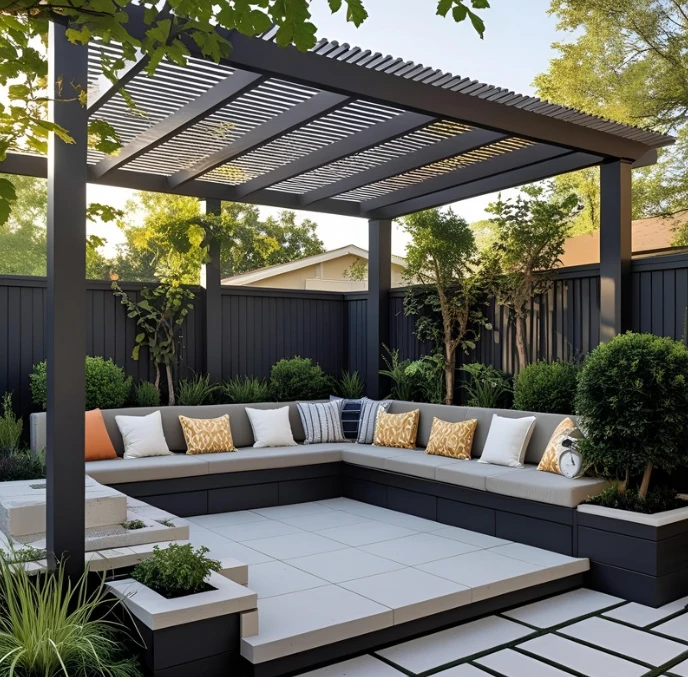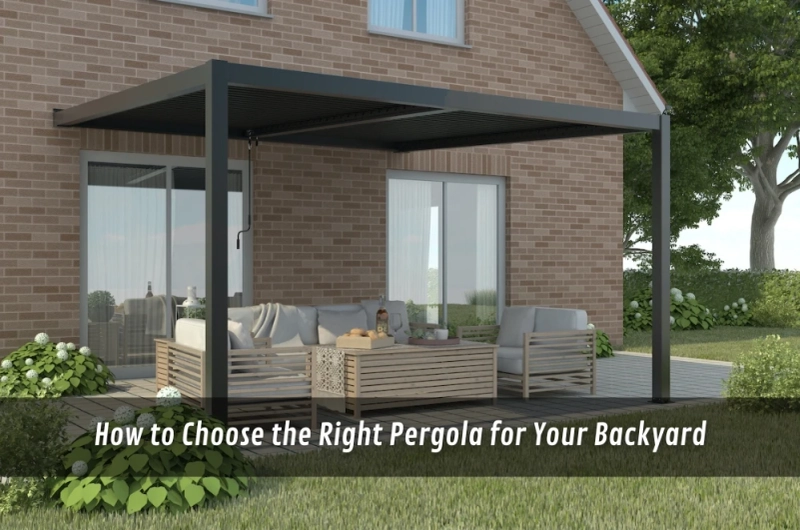If you’ve been eyeing your backyard thinking it’s missing something, it probably is. A pergola can transform a tired outdoor space into something structured, shaded, and welcoming. But while it might look like a simple weekend project, getting the right pergola in the right spot takes more consideration than most people expect.
When I first started looking, I assumed it was just a matter of picking a size and colour. But after a few missteps, it became clear that choosing the right setup involved everything from building orientation to long-term material care, whether you’re installing it yourself or hiring pergola installers, what you decide now will shape how usable and durable your pergola ends up being.
Pergolas offer more than just shade. They define spaces. They encourage you to step outside, whether it's to enjoy a coffee on a slow Sunday or entertain a dozen mates at dusk. But only if they’re done right.
Material choice and placement go hand in hand
Let’s start with something that seems obvious — what your pergola is made of. But there’s more to this decision than just looks. Timber, steel, and aluminium each carry different traits in terms of heat absorption, maintenance, and how well they weather the outdoors.
- Timber offers natural warmth but needs sealing and regular upkeep
- Steel works well for modern homes and requires less surface care
- Aluminium is lightweight and corrosion-resistant — good for coastal areas
Where you place your pergola plays just as big a role. Building in a shady corner versus a sun-blasted deck can change how each material performs over time.
Some people place their pergola over a deck. Others centre it on the lawn or hardscape. But if you don’t think about seasonal changes — say, sun angles in winter vs summer — you could end up with a space that’s too hot in December and too cold in July. That was my mistake once. Never again.
Understand your lifestyle before choosing a style
The "why" behind your pergola matters. Are you hoping to shade your patio for year-round BBQs? Create a quiet nook for reading? Maybe you want a spot for your plants to climb.
Your use case will influence:
- Whether you want a roof or open slats
- What kind of footings do you need
- If you want privacy screening or built-in seating
- How high should your vertical clearance be
When we installed ours, we quickly realised the open rafter look wasn’t great in wet weather. We added a retractable cover a year later. It would’ve been cheaper and easier to do it upfront.
The style of your home also influences what will work visually. A sleek metal pergola might suit a modern build, while timber blends better with weatherboard or country-style houses. Design and lifestyle go hand in hand here.
Climate is a bigger factor than most think
Here in Australia, we don’t just get sun — we get sun. And wind. And rain. What works in coastal NSW might fall apart in a frosty Ballarat winter or crack under Queensland heat.
Think about:
- UV resistance of your materials
- Whether you want rain cover (or airflow)
- Which way your pergola will face (north-facing tends to get more consistent light)
- The long-term durability of fixings and roof panels
Many pergolas look similar on the outside, but some fade quickly or rattle in storms. Small details, like using powder-coated brackets or rustproof screws, matter more than you’d expect.
If you’re in a high-wind area or bushfire-prone zone, be aware that some locations enforce structural codes that limit what you can install or require upgrades for fire safety.
Why outdoor comfort should factor into your plans
Once you’ve picked a structure and placed it right, don’t forget the most important part — how it feels to actually use the space. Things like shade, breeze, and visibility impact how often your pergola becomes part of everyday life.
- Avoid placing it where water tends to pool after rain
- Use screening, slats, or plants to soften sun glare
- Consider future use: fans, lights, even outdoor heating
We eventually added bamboo roll-down shades to the west side of ours, after spending one too many evenings squinting into sunset. It made a massive difference.
One helpful reference for usability planning is the outdoor living guide. It explores how households can make external living areas more usable and sustainable, depending on their climate and goals. It’s especially relevant if you’re building with longevity and comfort in mind.
Construction details matter more than they seem
Don’t just think about what goes on the pergola. You’ll want to pay attention to the base and frame, too. Sub-par footings, loose joints, or improper post placement can ruin the experience — or worse, make it unsafe.
If the ground’s uneven, or you’re building over pavers or gravel, don’t assume you can skip levelling. Even a slight lean will affect water runoff and roof performance.
If you're building yourself, take care with:
- Concrete footing depths and widths
- Post spacing and bracing
- Waterproofing where timber meets soil or stone
- Using stainless steel hardware in coastal zones
I nearly made the mistake of using untreated pine posts on soft soil. The supplier caught it before delivery — luckily. That one choice would have shortened the life of our pergola by years.
Those exploring the technical side of setup might appreciate a practical look into pergola installation, especially when planning anchoring and clearance.
Design choices that add function and flow
Once the big stuff’s sorted, it’s time to shape your space into something livable. Design shouldn’t be an afterthought — it’s what turns a structure into a lifestyle asset.
Here are a few additions that can really elevate the result:
- Soft landscaping (ground cover, planters, vines)
- Built-in seating or storage
- Smart lighting (solar, low-voltage, dimmable)
- Retractable shade covers or roof slats
If you’re working with a compact yard, try defining zones — dining vs lounging — with plant borders or even deck-level changes. Vertical design (screens, climbing plants, drop shades) can also make a small footprint feel spacious.
Don’t forget how your pergola looks from inside the house. Consider views through windows and how the structure connects visually to the kitchen, dining, or living zones.

Final thoughts
If you’ve made it this far, chances are you're giving real thought to how your outdoor space works, not just how it looks. A pergola can absolutely support that shift, especially when it’s tailored to your lifestyle.
But it’s easy to get caught up in surface-level decisions. What often makes the biggest difference long term are the quieter details — airflow, durability, and placement. Spending time upfront on layout and structure leads to a more usable space down the track.
Where conditions are harsh or unpredictable, it helps to understand how well pergolas in Australia hold up in real environments — the sun, wind, and daily wear that push outdoor materials to their limits.
Build for function, not perfection. The goal isn’t to create something flawless — it’s to have a space you’ll keep coming back to.



